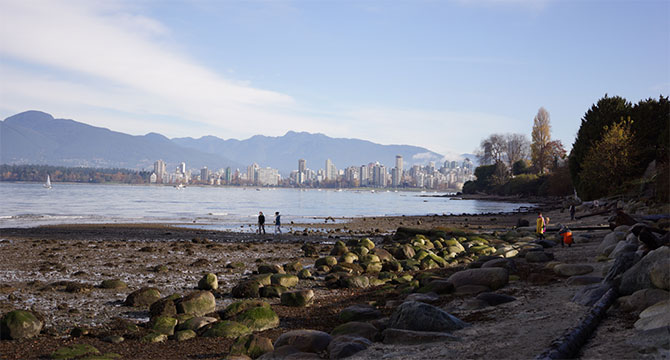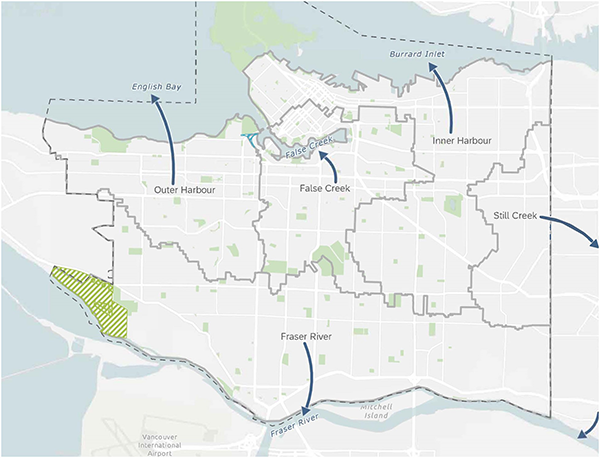

Adapting and integrating sewage and rainwater management in Vancouver
The Healthy Waters Plan is a 50-year strategy to guide the growth and renewal of Vancouver’s sewer and drainage system. Using a holistic, integrated grey-green approach to sewer and rainwater management, it addresses key issues, including:
- Reducing pollution from our sewer and drainage services
- Pollution from combined sewer overflows (CSOs), which happen when combined sewers are over capacity, releasing a mixture of rainwater and sewage into Burrard Inlet and other water bodies. Sewer separation is an important part of eliminating CSOs.
- Pollution from urban rainwater runoff, where rainwater landing on roofs, streets, and other hard surfaces carries contaminants that flow into Vancouver’s receiving waters, impacting the health of plants, animals, and people. Green rainwater infrastructure is an effective tool for treating rainwater runoff.
- Increasing our sewer capacity to accommodate population growth and related development
- Sewage includes all wastewater from household, industrial, and commercial activities.
- Mitigating impacts of climate change on our sewage and rainwater system
- More frequent and intense rain, flooding, prolonged drought, and sea level rise
- Maintaining infrastructure condition and replacing aging assets
Background
The Healthy Waters Plan is structured around our 5 main drainage basins and their associated receiving waters.

The Gestalt maps PDF file (10 MB) summarize information specific to the lands and receiving waters for each of these basins.
Receiving waters are water bodies, like oceans and creeks, that collect water flowing from upstream. Upstream waters can be rainwater and groundwater, or water collected in sewer pipes.
Learn about how rainwater flows into receiving waterbodies through this interactive StoryMap External website, opens in new tab developed in partnership with Tsleil-Waututh Nation.
Phase 1: Strategic Framework and Current State Assessment
Phase 2: Developing the Healthy Waters Plan
Timeline
-
Apr 2021 to Dec 2022
Phase 1: Strategic Framework and Current State Assessment
-
Feb 2023
Phase 1 approved by City Council
-
Jan 2023 to Dec 2024
Phase 2: Developing the Healthy Waters Plan
-
Feb 2025
Phase 2: Key directions presented to Council
-
We are here
-
Feb 2025 to Mar 2026
Phase 3: Developing the Healthy Waters Implementation Plan
Phase 3: Developing the Healthy Waters Implementation Plan
The next phase of work for the Healthy Waters Plan focuses on developing an implementation plan that aligns with our budgeting and long-term forecasting processes.
